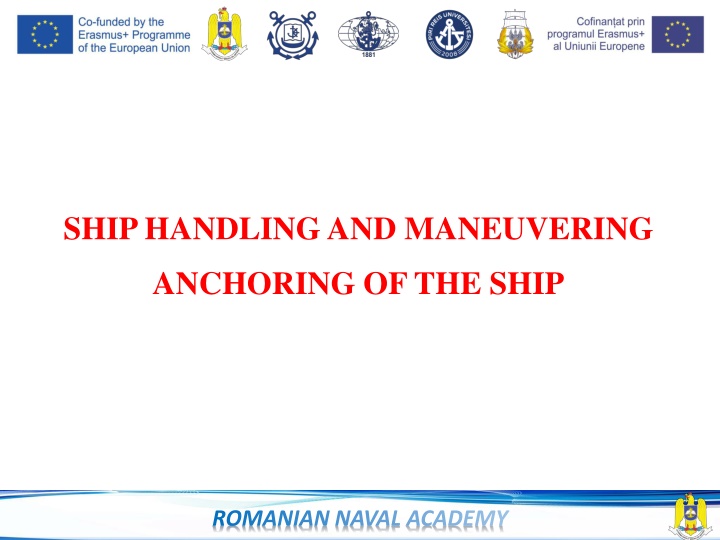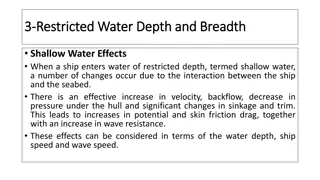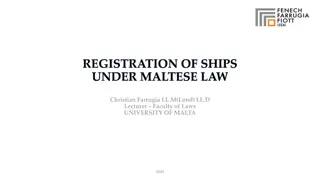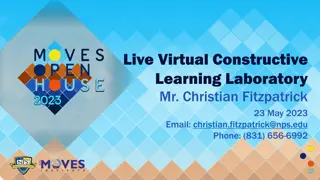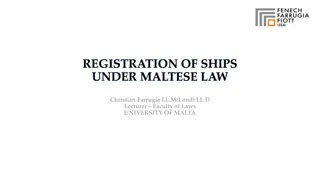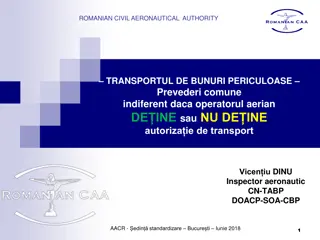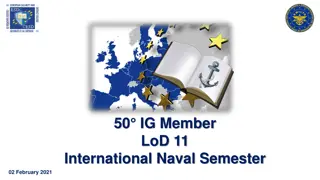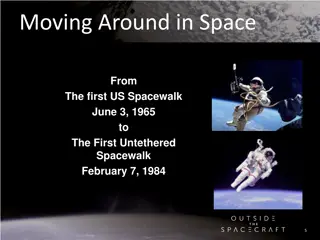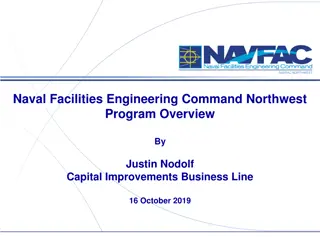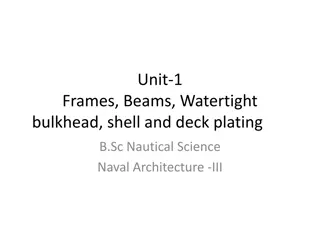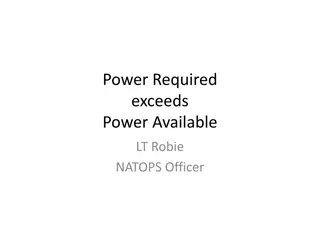Ship Handling and Maneuvering: Anchoring Procedures at the Romanian Naval Academy
Essential guidelines for anchoring a ship include assessing the anchorage position, choosing the right anchor, determining cable scope, and ensuring operational safety. The process involves considerations such as water depth, swinging room, weather conditions, and proper communication among crew members. Maintaining operational safety during anchoring procedures is crucial for the successful and safe mooring of the vessel.
Download Presentation

Please find below an Image/Link to download the presentation.
The content on the website is provided AS IS for your information and personal use only. It may not be sold, licensed, or shared on other websites without obtaining consent from the author.If you encounter any issues during the download, it is possible that the publisher has removed the file from their server.
You are allowed to download the files provided on this website for personal or commercial use, subject to the condition that they are used lawfully. All files are the property of their respective owners.
The content on the website is provided AS IS for your information and personal use only. It may not be sold, licensed, or shared on other websites without obtaining consent from the author.
E N D
Presentation Transcript
SHIP HANDLING AND MANEUVERING ANCHORING OF THE SHIP ROMANIAN NAVAL ACADEMY
The anchor plan The Ship s Master/Captain Offshore Installation Manager The Officer in Charge of the anchor party Master of Anchor Handling Vessel ROMANIAN NAVAL ACADEMY
The anchor plan 1. The intended position of anchoring of the vessel. 2. The available swinging room at the intended position. 3. The depth of water at the position, at both High and Low water times. 4. That the defined position is clear of through traffic. 5. That a reasonable degree of shelter is provided at the intended position. 6. The holding ground for the anchor is good and will not lend to dragging . 7. The position as charted is free of any underwater obstructions. 8. The greatest rate of current in the intended area of the anchorage. 9. The arrival draught of the vessel in comparison with the lowest depth to ensure adequate underkeel clearance. 10. The choice of anchor(s) to be used. ROMANIAN NAVAL ACADEMY
The anchor plan 11. Whether to go to single anchor or an alternative mooring. 12. The position of the anchor at point of release. 13. The amount of cable to pay out (scope based on several variables). 14. The ship s course of approach towards the anchorage position. 15. The ship s speed of approach towards the anchorage position. 16. Defined positions of stopping engines, and operating astern propulsion (Single Anchor Operation). 17. Position monitoring systems confirmed. 18. State of tide ebb/flood determined for the time of anchoring. 19. Weather forecast obtained prior to closing the anchorage. 20. Time to engage manual steering established. ROMANIAN NAVAL ACADEMY
Bringing the vessel to a single anchor Fundamental principle of anchoring, is that it is the weight of cable and the lay of the scope that anchors the vessel successfully, not just the weight or design of the anchor. ROMANIAN NAVAL ACADEMY
Bringing the vessel to a single anchor Surface obstructions must be significantly clear of the swinging circle, e.g. piers, buoys, navigation marks, etc. Swinging room vessel lying to a single anchor ROMANIAN NAVAL ACADEMY
Operational safety when anchoring Routine operations: Check that the overside surface area is clear of small craft or other obstructions under the flare of the bow; Adequate time to walk the anchor back clear of the Hawse Pipe , prior to actually letting go. Designated, experienced persons should operate the windlass and braking system. All parties to the operation should have inter-related communications. The marine pilot or ship s Master who has the con of the vessel should be continually informed as to the Lead of Cable and the number of shackles in use. All recognition and sound signals should be employed promptly and correctly to highlight the status of the vessel. ROMANIAN NAVAL ACADEMY
The watch at anchor Precaution about: own ship dragging anchor another ship dragging towards own ship Watch duties, inclusive of keeping the lookout include monitoring: the performance of the weather particularly closely; keeping a listening watch for radio traffic. ROMANIAN NAVAL ACADEMY
Anchoring principles ROMANIAN NAVAL ACADEMY
Detection of dragging anchor The movement of the ship may be ascertained by any or all of the following methods: Check the anchor bearings of the fixed landmarks. Obtain an immediate positional check from the GPS operation, to ensure that the instrument co-ordinates correspond to the Latitude and Longitude of the ship s anchored position. Engage the variable range marker of the ship s radar on to a fixed land object Direct observation and hand contact with the anchor cable may give further indication that the ship is dragging its anchor. ROMANIAN NAVAL ACADEMY
Anchoring and anchor watch checklist ROMANIAN NAVAL ACADEMY
